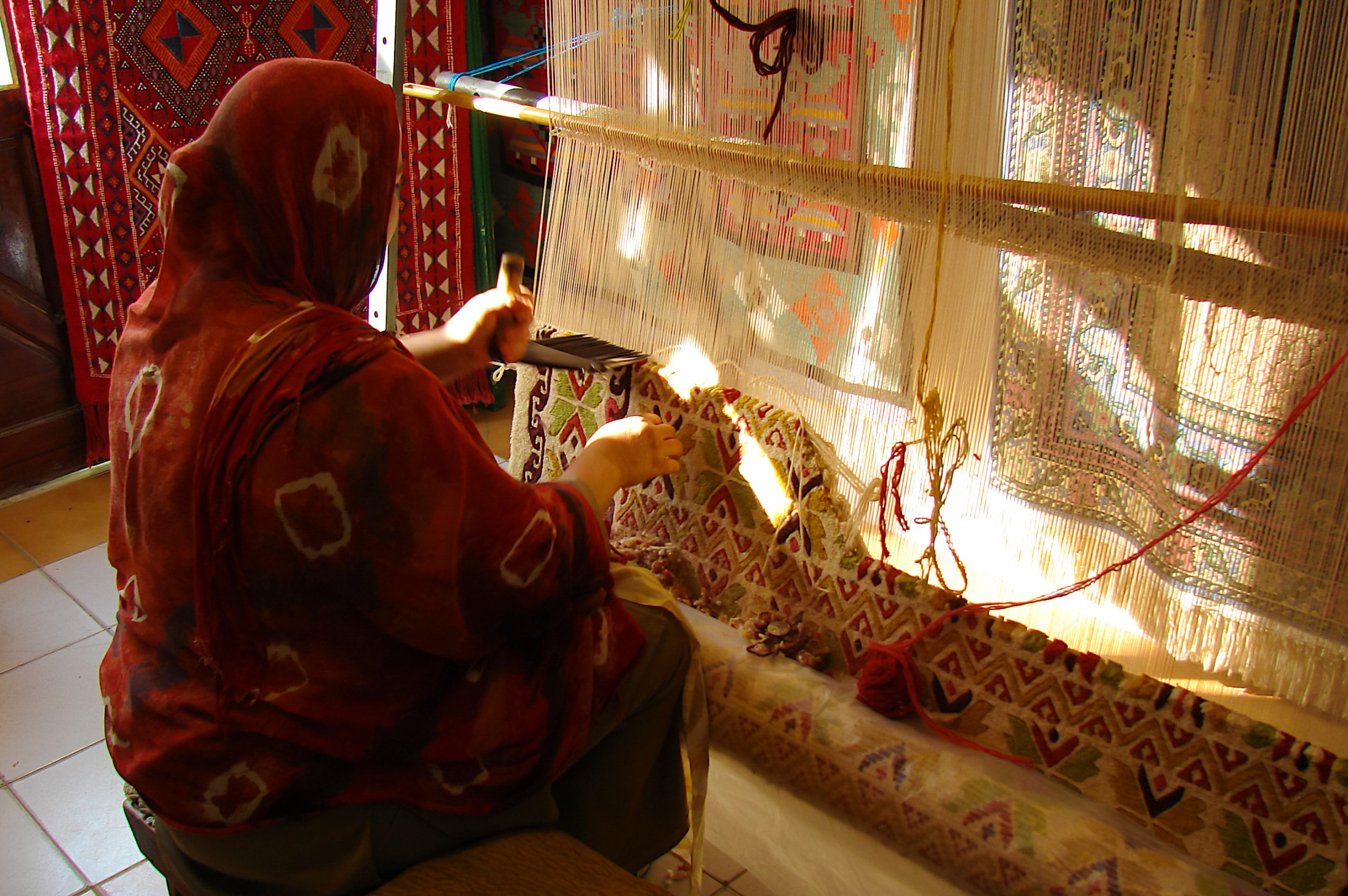The tribes or Berber and different Moroccan nomads usually use rugs as saddle pads (also called numnah), camp partitions and wraps. The carpet crafts from natural wools that were dense and warm, thus, difficult to carry, whilst lighter rugs were convenient to carry and wear. Moroccan tapestry became famous, brilliant, and multicolored as bedouin and mountaineers employed herb, pest, and mineral colors in their patterns to make them stand out. True creativity relies on experience and talent, which are transferred from one generation to another.
Rug weaving & its rudiments
On moving or static frames, hand-crafted rugs are made. The basis of the textile is formed by pulling the deform threads diagonally. The cotton threads are moved horizontally over and beneath, or to and from, the warp to evolve as a pattern. If you are using a fixed loom, then the rug can only be as long as the frame so that it fits properly. The weaver can use a rotating frame to increase or decrease the length of the carpet by putting the wrapped finished pieces around the loom’s lower shaft for different lengths. The row is pounded down every time, as the weaver moves the filling over the thread to compress the material. The craftsman’s advanced training creates their motifs and designs by combining traditional techniques and experimenting with color and design. Moroccan rug manufacturing is influenced by practices from the Middle East and Northern Africa. But, there are a few general weaving types that are used by everyone.
Knotted
The knotted wool is puffy and traps air inside the yarns. In addition, the knotted pile is warmer than flat-weave carpet which is thin. Some rows of weave yarn are stretched over the warp and fixed firmly to create a strong base for the raised-pile knots. Following that, the weaver wraps extra weft yarn around the warp, holding a minimum of two warp threads, and knots the excess yarn across the breadth of the tapestry. Thread strands are woven across vertical warp yarns, which are alternated by rows of knotted yarn, as the weaving progresses. The amount of weft passes the weaver makes between rows of knots is affected by the rug’s design and desired density. Another weft threading border, the knot designs are maintained till the end of the rug’s length. Knots can be snipped as the weavers knit, along with it and the pile can be reduced to the balanced level. Before, the weaving is removed off the loom by a finisher.
Flatweave
Now, to generate a tidy, silky fabric in a flat weave, weft yarn fibers are threaded into or out of the warp threads, and they are hammered downwards. In the country’s hot lowlands and deserts, Moroccan rugs manufactured using this technique were popular. Plain carpets are lighter than piled carpets because there are no tangles, yet they can have vast designs. Strips and crests are common patterns, but skilled weavers create intricate rugs that resemble works of art. The colors range from sharp hues to ivory-colored pure white, off-whites, beiges, brownish, and blacks, with tangled or knitted parts altering the appearance. The Oued Zem main style is represented by vibrant colors and creatures, toys, or home elements. These carpets, sometimes known as “children’s rugs,” are charming but not neatly woven like the cultural styles.
Substitute Weft
Weft replacement is a term for a plain weave, which has no official name and is sometimes confused with tapestries and other weaving techniques. Moroccan weavers frequently weave stunning motifs from the rear of the frames, using several weft thread colors in almost the same thread. On the surface, there is a delicate design with no weaving gaps. The thread from the top of the carpet might be left to run downward, creating a cushion of longer, drifting fibers at the bottom. Some workers enjoy trimming the dangling strands, resulting in loose threads on the back of the rug. Yarn Hue shifts in woven weaving allow the artist to create elaborate designs in a flat, tightly woven rug.

